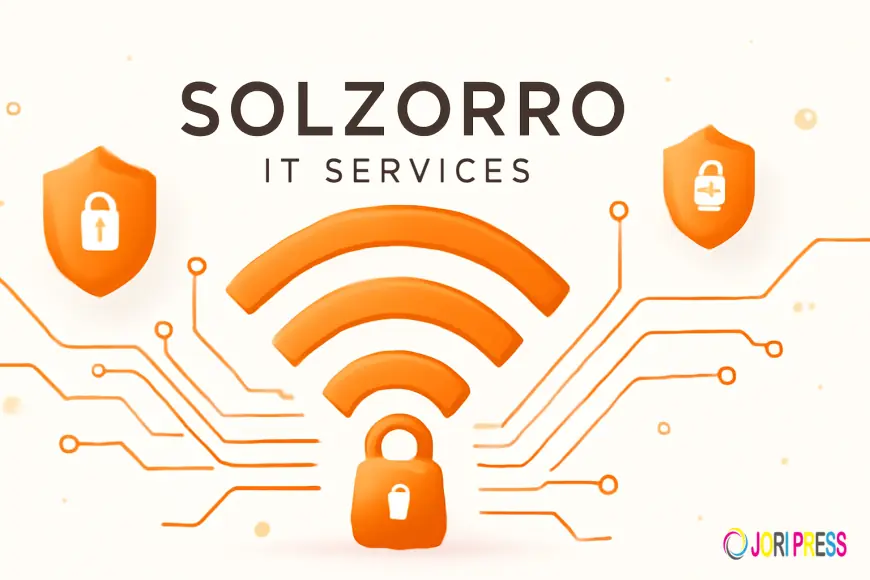How to Secure Your Wi-Fi Network: A Complete Guide
Learn how to secure your Wi-Fi network with expert tips to protect data, devices, and privacy.

In today’s digital-first world, Wi-Fi is more than just a convenience—it’s the backbone of both business and personal connectivity. From remote work to online banking, a secure Wi-Fi network is essential for protecting sensitive data and ensuring smooth online experiences. Unfortunately, unsecured or poorly configured networks are a common entry point for cybercriminals.
This guide explores practical steps you can take to secure your Wi-Fi network, why it matters, and how businesses can strengthen their defenses.
Why Wi-Fi Security Matters
Data Protection
Every device connected to your Wi-Fi—from laptops to smart home devices—sends and receives sensitive data. Without proper security, attackers can intercept and exploit this information.
Business Continuity
For businesses, an unsecured network isn’t just a privacy issue—it’s a potential disaster. Cyberattacks can lead to downtime, data breaches, and costly compliance violations.
Personal Safety
At home, unsecured networks put family devices at risk of malware, identity theft, and unauthorized surveillance.
Essential Steps to Secure Your Wi-Fi Network
1. Change Default Credentials
Most routers come with default usernames and passwords that are easy to guess. Always change these credentials to something strong and unique.
2. Use WPA3 Encryption
Encryption protects data traveling between your devices and the router. WPA3 is the latest and most secure Wi-Fi encryption standard—make sure your network uses it.
3. Create a Strong Wi-Fi Password
Your Wi-Fi password should be at least 12 characters long and include a mix of letters, numbers, and symbols. Avoid personal information or common words.
4. Disable WPS and Remote Management
Wi-Fi Protected Setup (WPS) and remote management features can make it easier for hackers to access your router. Disable these settings unless absolutely necessary.
5. Keep Firmware Updated
Router manufacturers release updates to patch security vulnerabilities. Regularly check for updates and apply them promptly.
6. Set Up a Guest Network
If you often have visitors, create a separate guest network. This prevents outside devices from accessing your primary devices and data.
7. Limit Device Access
Enable MAC address filtering or limit the number of devices allowed to connect. This gives you more control over who uses your Wi-Fi.
Advanced Security Tips for Businesses
While the above steps apply to both home and business users, organizations must take additional measures:
Deploy Network Monitoring
Business networks handle more devices and traffic, making them harder to manage. Network monitoring tools detect unusual activity and alert IT teams to potential threats.
Implement VLANs
Virtual LANs (VLANs) allow businesses to segment their networks, separating sensitive systems from guest traffic or IoT devices.
Partner with IT Experts
Securing a Wi-Fi network is not a one-time task—it’s an ongoing process. Partnering with IT professionals ensures your setup stays compliant and resilient. For example, Solzorro’s Secure Wi-Fi network services can help businesses design and maintain strong wireless security.
Common Myths About Wi-Fi Security
-
“My password is enough protection.” Strong passwords are important, but encryption and router configuration are just as critical.
-
“Hackers don’t care about small networks.” Cybercriminals often target small businesses and individuals because they’re easier to breach.
-
“Free public Wi-Fi is safe if I don’t log in.” Public Wi-Fi networks are hotspots for hackers who intercept unencrypted data.
FAQs on Securing Wi-Fi Networks
What is the most secure Wi-Fi encryption standard?
The most secure standard currently available is WPA3. If your router doesn’t support it, use WPA2 as the next best option.
Should I hide my Wi-Fi network (SSID)?
Hiding your SSID can add a layer of obscurity, but it’s not a strong security measure on its own. It should be combined with encryption and strong passwords.
How often should I change my Wi-Fi password?
Experts recommend updating your Wi-Fi password every 6–12 months, or immediately if you suspect unauthorized access.
Is a VPN necessary if my Wi-Fi is secure?
Yes. A Virtual Private Network (VPN) encrypts your traffic even further, protecting data from interception on both public and private networks.
Final Thoughts
A secure Wi-Fi network isn’t just about convenience—it’s about safeguarding your digital life. Whether at home or in business, taking proactive steps like updating firmware, using strong encryption, and monitoring traffic can prevent costly cyber incidents. For businesses seeking expert help, partnering with professionals ensures both compliance and long-term resilience.
By making Wi-Fi security a priority today, you protect your data, devices, and peace of mind tomorrow.
Files
What's Your Reaction?
 Like
0
Like
0
 Dislike
0
Dislike
0
 Love
0
Love
0
 Funny
0
Funny
0
 Angry
0
Angry
0
 Sad
0
Sad
0
 Wow
0
Wow
0





















































